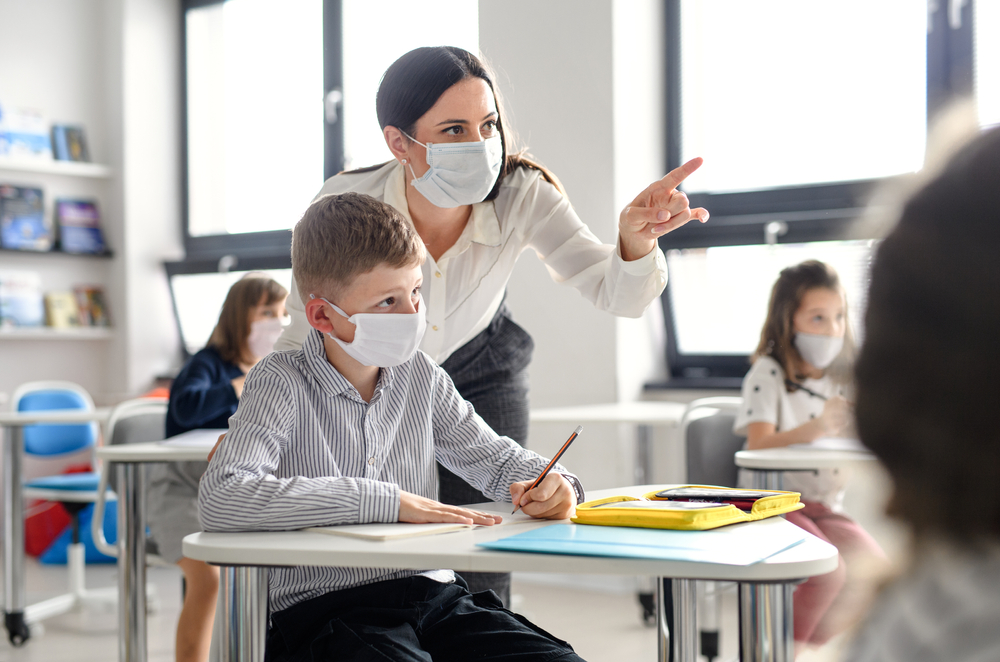Increasing Mindfulness to Support Educator Well-Being
- September 17, 2021
- By Mandi Olson

Educators know how challenging it is each day to plan instruction, teach content, provide meaningful feedback, assess students, and communicate with parents. Teaching holds a myriad of different roles and responsibilities for teachers. When you add the current stressors of working during a pandemic, the stress for teachers intensifies. Taking the time to understand and implement strategies to foster educator well-being is always essential, but it is a crucial and worthwhile endeavor with the current demands on teachers.
Discussing the importance of educator well-being almost feels like we are adding an additional priority to the already full plate of a teacher. However, by not focusing on well-being, educators risk increased stress and possible burnout. Currently, up to 40% of teachers experience burnout, and within the first five years of teaching, about 40% of teachers leave the profession (McManis, n.d.). Students need highly effective teachers to stay in the job, and helping educators first focus on their well-being may keep more teachers in the profession.
There are many ways educators can focus on improving their well-being. Practicing mindfulness is one approach. Mindfulness is being fully in the moment, focusing on what is currently happening in an open and non-judgmental way, which can also help regulate emotions. In addition, mindfulness can help teachers be more effective at reducing conflict in the classroom and helps to develop more positive relationships with students, both of which can increase job satisfaction.
To practice mindfulness, teachers recognize their emotional patterns and begin to proactively regulate how they behave, responding in the way they want to rather than reacting automatically. It can also help teachers reflect upon the positive moments in their job, for instance, when they feel the joy of a genuine connection with their students or experience the fun and excitement students feel when learning makes sense to them.
There are different ways to practice mindfulness. A useful example is provided by Pal, Hauck, Goldstein, Bobinet, & Bradley (2018). They suggest mindfulness practice by sitting in a relaxed position in a chair, making sure your spine is straight but not rigid, closing your eyes, and becoming aware of the sensations you feel. Then, taking three long, deep breaths by breathing in through your nose and out through your mouth. Allowing your breath to settle into a rhythm, by following it in and out, noticing the rise and fall of your chest and stomach as you breathe Third, creating a meaningful intention to focus on throughout the day. Examples might include, “Today, I will be kind to myself; be patient with others; give generously; persevere; have fun” or anything else you feel is important (Pal, et.al., 2018). Finally, check- in with yourself by pausing and taking a breath while revisiting your intention. The quality of your communications, relationships, and mood shifts as you become more and more conscious of your intentions for each day (Pal, et.al., 2018). Even though the day is filled with many different responsibilities for teachers, taking just a few minutes each day to focus on mindfulness can improve well-being.
Mindfulness has also been helpful for students to learn and practice in a classroom. Teachers can support their students as they begin to learn how to practice mindfulness as well. Research has shown the importance of teacher-student relationships. By giving each student our full mindful attention for even a short period of time provides each student with the message that they are important to the teacher. By making a connection with each student, teachers let them know they are valued as individuals. Mindfulness is one way to begin to foster relationships and also strengthens educator well-being which should always be a priority for schools to encourage and support.
References:
McManis, L. Educator Wellness: Self-Care in a Selfless Field. Resilient Educator. https://resilienteducator.com/lifestyle/educator-wellness/
Pal, P., Hauck, C., Goldstein, E., Bobinet, K., & Bradley C. (2018, August 28) 5 Simple Mindfulness Practices for Daily Life. Mindful. https://www.mindful.org/take-a-mindful-moment-5-simple-practices-for-daily-life/